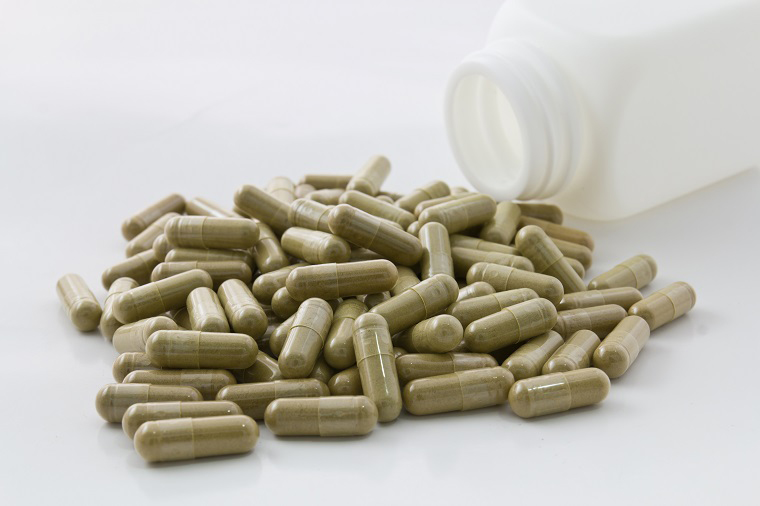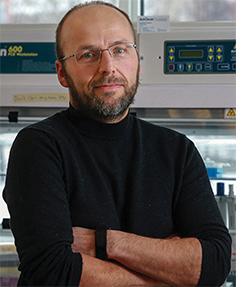Herbal Medicine Fraud: Do You Know What’s in Your Pill?
By Michael Lim
August 16, 2018

Most of us have tried, or at least heard of, traditional herbal medicinal products or natural health products (NHPs) such as valerian root and St. John’s wort. Many of these ‘alternative’ medicines have been used for generations around the world, but do not work for everyone. However, this lack of effect may be due to a lack of the plant itself in the product. Now, thanks to the efforts of Prof. Steven Newmaster and his colleagues in the Department of Integrative Biology, advanced DNA-based diagnostic technologies could soon ensure that your herbal pills contains exactly what they are supposed to.
NHPs are a multi-billion dollar industry with thousands of products on the market; but there is little oversight and quality control compared to mainstream medicine. In fact, a previous study by Newmaster in 2013 found that nearly 40% of tested NHPs were found to be contaminated or were substituted with other plant products. This can cause a multitude of problems ranging from consumers paying for absent products, to the unknowing ingestion of potentially harmful compounds.
“I was suddenly faced with an ethical problem,” said Newmaster. “I’ve always believed that plants possess the potential for good nutrition and healing, and they may not work simply because they are not in the bottle.”
While some companies may intentionally sell altered products, others may simply be limited in the tools they have available for quality control. Most companies rely on analytical chemistry tools such as mass spectrometry, which identifies compounds based on differences in their molecular mass. Different substances in a compound provide a unique combination of masses, acting like a fingerprint. But some substances can have similar masses, leading to false identifications.
Newmaster realized that DNA analysis had the potential to transform quality control in the NHP market. Just as biologists can use DNA to detect and discriminate the presence of closely related animal species, Newmaster knew it could be used to confirm the identity of plant ingredients used in NHPs.

Working with collaborators Tianyi Xin and Jingyuan Song at the Peking Union Medical College & Chinese Academy of Medical Sciences, Newmaster and his team recently combined two types of DNA analysis: metabarcoding and single molecule, real time sequencing or “SMRT”. Metabarcoding involves amplifying DNA collected from samples and comparing it to a reference library of known species, detecting the presence (or absence) of species. SMRT sequencing, on the other hand, uses fluorescent dyes to mark the individual nucleotides that make up DNA, creating a highly accurate visual representation of the DNA present. By combining these processes, even small amounts of substances can be precisely and quickly detected for many samples.
The team tested their method on a commercial product known as Jiuwei Qianghuo Wan (JWQHW), which has been used in China for over 800 years to treat colds and other common ailments. First, the team acquired samples of the nine different plant ingredients that make up JWQHW. After confirming their identity with DNA barcoding, the substances were combined into a lab-made JWQHW pill that was sequenced and quantified, thereby establishing a reference standard.
Next, the team purchased JWQHW from various drug stores and compared it to their lab-made standard. While many DNA sequences were conserved between the commercial and lab-made products, there were clear signs of contamination and missing ingredients. Interestingly, the analysis revealed that one of the substances appeared to have been switched out with a similar herbal drug that was >1/16th the price. While not necessarily deliberate (the manufacturer of the commercial JWQHW product also used the ‘switched’ substance in another herbal medicine), it revealed that there was contamination that could not be easily picked up by traditional analytical methods.
Newmaster notes that the study was not meant to cast suspicion on NHPs such as JWQHW, but rather to showcase the new technologies that are now available to assess their quality. In fact, with recent advancements in DNA analysis, this type of test is only 30-60% of the price of some chemical analysis tests. Currently, the Newmaster and his collaborators around the globe are working together through the newly established Natural Health Product Alliance to devise standard test procedures and to better understand how NHPs, with substances proven to be present and pure, provide their health benefits.
“I’m hoping to move the perception of NHPs in a new direction,” said Newmaster. “By giving scientific credibility to alternative medicines, we can get away from the label of ‘witch doctor stuff’.”
Other contributors to the study include Subramanyam Ragupathy (University of Guelph), Zhichao Xu, Jing Jia, Yulin Lin, Meng Lei (Peking Union Medical College & Chinese Academy of Medical Sciences), Christine Leon (Royal Botanical Gardens), and Songnian Hu (Chinese Academy of Sciences). Funding for this research came from the National Natural Science Foundation of China and the Chinese Academy of Medical Sciences.
Read the full article in the Acta Pharmaceutica Sinica B
Learn more about the Natural Health Product Alliance.
Read about other CBS Research Highlights